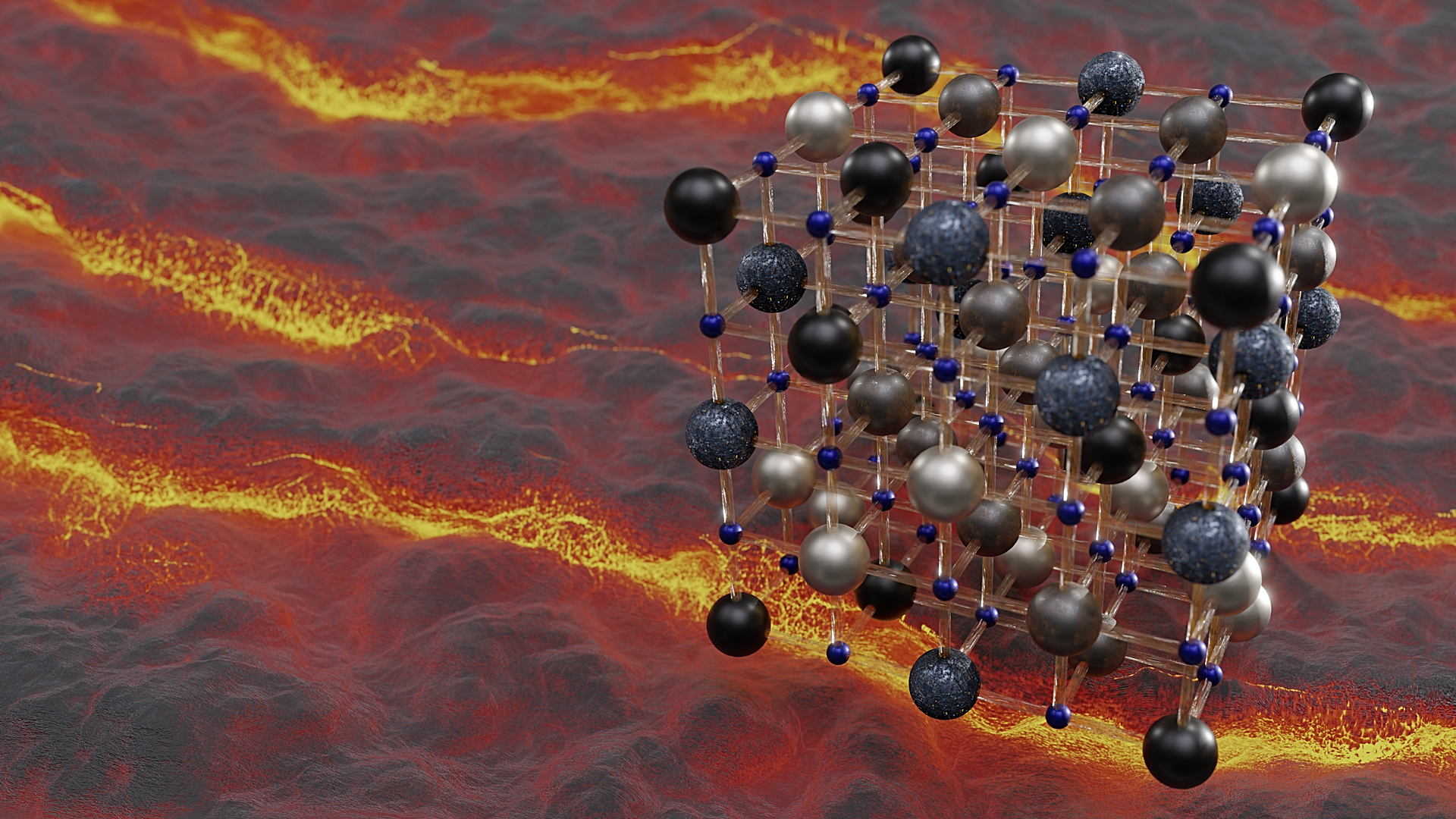An international research team has devised a method for swiftly identifying novel materials capable of functioning at exceedingly high temperatures, reaching several thousand degrees Celsius.

Artistic view of the crystal lattice of a multi-component ceramic, so heat-resistant and electronically robust that it could enable devices to operate at lava-like temperatures. Image Credit: B. Schröder/HZDR
These high-performance ceramics hold the potential to serve as the foundation for more durable coatings, batteries, and devices resistant to radiation. Dr. Rico Friedrich, a research group leader at the Dresden University of Technology (TUD) and the Helmholtz-Zentrum Dresden-Rossendorf (HZDR), played a pivotal role in achieving these promising outcomes. The research findings have been recently published in the journal Nature.
The prospect of electronic devices operating at temperatures comparable to molten lava, reaching several thousand degrees Celsius, may soon become a reality, thanks to a groundbreaking class of high-performance materials. Led by materials scientists at Duke University (USA), a research team has introduced a computational method capable of rapidly generating numerous variants of these novel materials.
These ceramics, derived from high-entropy metal carbonitrides or borides, exhibit exceptional heat resistance and electronic stability, potentially facilitating device functionality in extreme heat environments.
The unique nature of these compounds, characterized by highly disordered structures known as high-entropy phases, results in distinct mechanical, electronic, and thermal properties due to the random distribution of cations within the material, leading to significant wave reflection and interference.
Using Thermodynamic Data to Make Precise Predictions
Rico Friedrich, affiliated with the Chair of Theoretical Chemistry at TUD and the HZDR Institute of Ion Beam Physics and Materials Research, plays a crucial role in this collaborative research initiative. Leading the DRESDEN-concept research group "Autonomous Materials Thermodynamics - AutoMaT,"
Friedrich focuses on the data-driven design of two-dimensional nanomaterials and the enhancement of their electronic and magnetic properties. He spearheaded a portion of the extensive calculations integral to the development of the innovative method termed "Disordered Enthalpy-Entropy Descriptor" (DEED).
DEED, a formula meticulously considering both energetic and entropic factors, specifically the disorder within a material, is instrumental in the creation of these ceramics. This imparts a predictive capability for synthesizing these intricate systems across various material classes, surpassing earlier methods.
To enhance its efficacy, DEED relies on an extensive dataset of thermodynamic information on inorganic materials, readily accessible in the AFLOW database housing approximately 3.5 million stored compounds. This data facilitates a reliable assessment of the stability of the newly developed ceramics.
Successful Production in the Laboratory
In its first demonstration, DEED predicted the synthesizability of 900 new formulations of high-performance materials, 17 of which were subsequently successfully produced and tested in laboratories. The finished ceramics have a metallic appearance and dark grey or black look.
Rico Friedrich, Chair, Theoretical Chemistry, Dresden University of Technology
“They feel like metal alloys, such as stainless steel, and have a similar density. And although they look metallic, they are hard and brittle like conventional ceramics. They could form the basis for new wear- and corrosion-resistant coatings, thermoelectrics, batteries, catalytic converters, and radiation-resistant devices,” details Dr Friedrich.
Expanding upon these findings, Rico Friedrich and his team aimed to explore the properties of the newly developed materials and their interactions at interfaces, with a focus on potential electronic applications.
As a member of the Dresden research alliance DRESDEN-concept, the group anticipates that DEED will be employed by other researchers to optimize and assess the properties of emerging ceramic materials for diverse applications. Given the vast range of potential properties and applications, they anticipate that it is only a matter of time before some of these materials transition into commercial production.
Journal Reference
Divilov, S., et al. (2024). Disordered enthalpy–entropy descriptor for high-entropy ceramics discovery. Nature. doi.org/10.1038/s41586-023-06786-y.